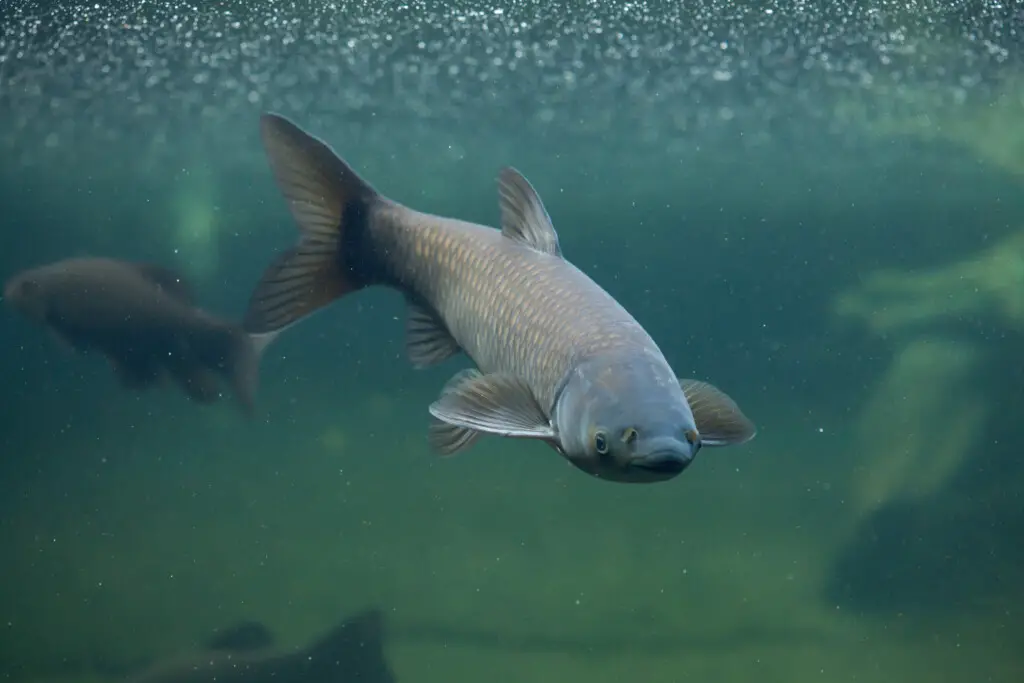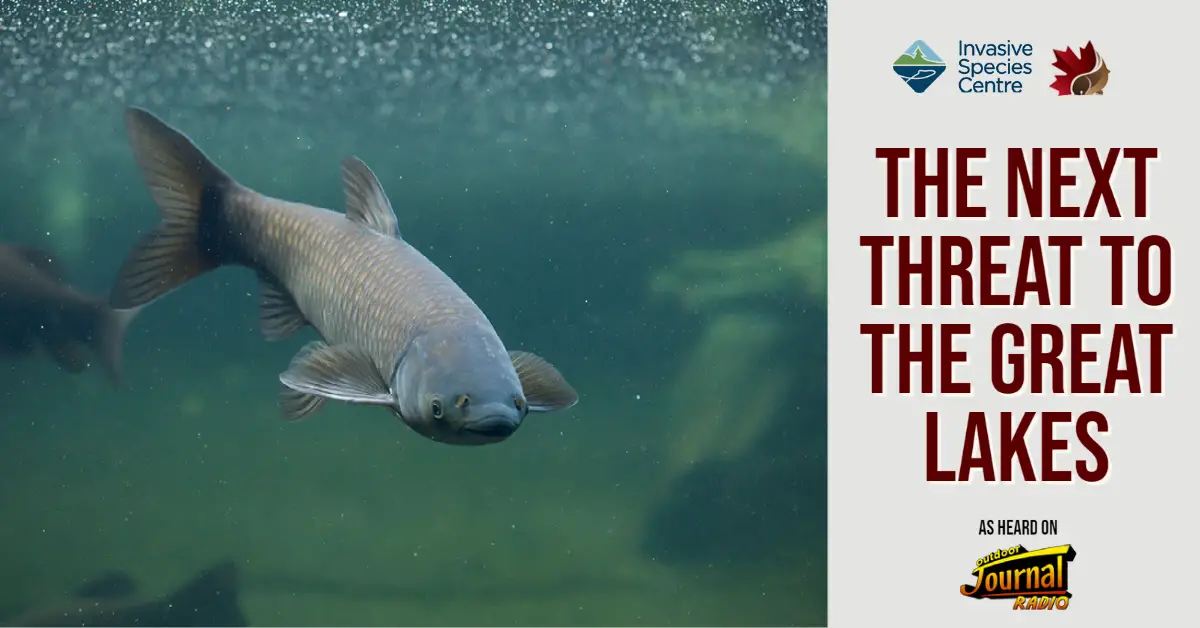Brought to you by the Invasive Species Centre
Do you love fishing and boating on the Canadian waters of the Great Lakes? Are you passionate about the fish that call these waters home? If so, we have an important mission for you: be on the lookout for Grass Carp!

Where did they come from?
Grass Carp is one of the four species of Asian carps that are threatening to invade the Great Lakes. The other three species are Bighead Carp, Black Carp, and Silver Carp. Each species is distinct and would have unique impacts if it was to establish in the Great Lakes basin.
These aquatic invaders were introduced to the southern United States in the late 1960s for use as biological control in aquaculture facilities. Flooding allowed these fishes to escape the facilities and eventually make their way into the Mississippi River Basin, where they are currently established. The spread of Grass Carp is largely the result of stocking for aquatic vegetation control throughout the U.S. The legislation around stocking in the U.S. varies by state.
In Canada, it is illegal to import, possess, transport, release, or introduce any species of Asian carp unless it is dead and eviscerated (gutted).
Jumping Silver Carp (Photo by the Invasive Carp Regional Coordinating Committee)
The Most Imminent Threat
Of the four species, Grass Carp is the most imminent threat to the Canadian waters of the Great Lakes. Researchers recently found evidence of natural reproduction in the Sandusky and Maumee rivers, both tributaries of Lake Erie on the U.S. side. However, there is currently no evidence of an established population in Canadian waters and monitoring continues.
Grass Carp (Photo by USFWS)
Voracious Eaters
One of the big problems with Grass Carp is their voracious appetite. They mostly eat aquatic vegetation and can consume up to 40% of their body weight in food daily. That’s like a person eating 40 large pizzas, 430 cups of lettuce, or 180 burgers!
They only digest about half of the plant material that they consume each day and expel the remaining material, which pollutes the water and promotes algal blooms. These eating habits alter ecosystems by reducing food availability, shelter, and spawning areas for native fishes. Just 10 adult Grass Carp per hectare can reduce wetland vegetation by up to 50%, causing high impacts to a predicted 33 fish species in the Great Lakes, including Walleye, Smallmouth Bass, Muskie, Northern Pike, and more!
Grass Carp can also grow very large, very quickly. Reaching sizes of approximately 5 ft and 100 lbs, they quickly outgrow the gape (mouth) size of any native predators that could control their populations.
Economic Impacts
On top of these ecological impacts, Grass Carp would also pose negative economic impacts. The Great Lakes basin has proven to be an extremely valuable resource to the Canadian economy through several ventures, including recreational fishing.
The Canadian recreational fishing industry is valued at $556 million USD. Anglers contribute a large amount of money to the economy via fishing licenses, purchasing fishing equipment and gear, and tourism. Reduced recreational fishing opportunities due to Grass Carp would have an impact on other businesses and livelihoods that depend on the development of this sector, including bait and tackle shops.
What is being done?
Many agencies across Canada and the United States are working to prevent Grass Carp from becoming established in the Great Lakes. Fisheries and Oceans Canada (DFO) does extensive early detection surveillance at up to 37 high-risk locations throughout the Great Lakes, every year.
The Ontario Ministry of Natural Resources and Forestry conducts eDNA (environmental DNA) sampling to test the waters for traces of Asian carp DNA. There are also many American agencies working on monitoring and prevention on the U.S. side of the Great Lakes, and research on Grass Carp biology and prevention is ongoing, on both sides of the border. But these groups can’t protect the Great Lakes alone, they need your help!
How can I help?
The most important thing you can do as an angler is learn how to identify Grass Carp and report all sightings of suspected Grass Carp. In Ontario, you can report to the Invading Species Hotline (1-800-563-7711), the EDDMaps App (available for Apple and Android), or eddmaps.org.
With ice fishing in full swing, it’s important to note how bait dumping can impact the movement of Grass Carp. Don’t dump your bait! You never know what species might be in your bait bucket and juvenile Asian carps can look very similar to common baitfish species! Be sure to check out the baitfish movement regulations regarding Baitfish Management Zones at www.ontario.ca/bait. Did you know in Ontario, it is illegal to dump your bait, both live or dead, within 30 m of any water body? Also, keep in mind it is illegal to import, possess, or transport, release, or introduce Asian carps unless they are dead and eviscerated.
Learn more!
Visit www.asiancarp.ca to learn more about the threat of Grass Carp!






2 Responses
There good for the Garden
Great read